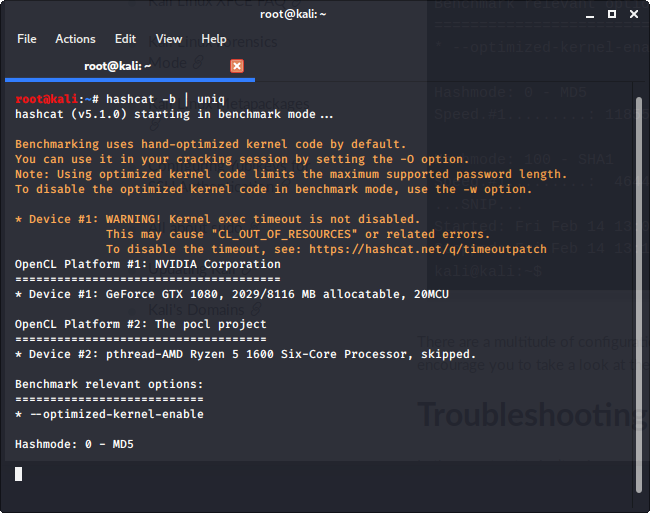

Unfortunately, documentation to enable this feature is scarce and practically nonexistent even on the internet.
OPENCL BENCHMARK LINUX WINDOWS 10
Since Windows Sandbox is pretty limited, it would be nice to have this feature on a regular Windows 10 Hyper-V virtual machines. Indeed, as can be seen in this Windows Sandbox configuration reference, GPU support is explicitly mentioned there.

Windows running inside of a VM or container”. The announcement goes further that “GPU-PV is now a foundational part of Windows” and “Today this technology is limited to Windows guests, i.e. In this DirectX support for WSL 2 announcement, it is said that GPU-PV is already supported for WDAG (which was introduced way back in Windows 10 version 1809) and Windows Sandbox (introduced in Windows 10 version 1903).
OPENCL BENCHMARK LINUX DRIVER
Guest virtual machines use the same GPU driver as the host, which means that the full capabilities of the GPU are supported on the guest as well. The GPU is virtualized similarly to CPU (for example, multiple virtual machines and the host can share a single GPU, and a single virtual machine can fully utilize the GPU when the GPU is unused). GPU-PV leverages the new graphics driver model in WDDM 2.5 (first introduced in Windows 10 version 1809) to provide support for virtualizing GPUs right from the graphics driver itself. WDDM GPU ParavirtualizationĮnter the WDDM GPU Paravirtualization (or GPU-PV for short). This approach is similar to those used in VMware Workstation and VirtualBox, and they share the same limitations as well. Further, every time there is a new graphics API such as Vulkan or DirectX 12, the whole system has to be engineered. Besides inefficient, this approach means limited graphics API support as different hardware has different characteristics and supports a different set of APIs, where a common denominator has to be selected. This is different from the previous RemoteFX approach (which is already discontinued, by the way), in which it creates a virtual GPU on guest and the guest application’s call on graphics API upon that virtual GPU is interpreted, translated, forwarded to host, and back again.
OPENCL BENCHMARK LINUX HOW TO
In this post, I am going to guide how to enable GPU acceleration in Hyper-V on Windows 10 guests. Being a Type-1 Hypervisor with tight integration to the host operating system means that Hyper-V offers unmatched performance when virtualizing said guests. Still, Hyper-V is one of the best virtualization platform available in Windows platform, if your guest is either a modern Linux or modern Windows. The ability to run Linux applications ( WSL 2), Virtualization-based Security, and application containerization (the WDAG and Windows Sandbox) are powered Hyper-V. Nowadays, Hyper-V has evolved from a server virtualization software to something very integral to contemporary Windows operating systems. For a short guide on how to enable GPU-PV for Hyper-V, click here.


 0 kommentar(er)
0 kommentar(er)
